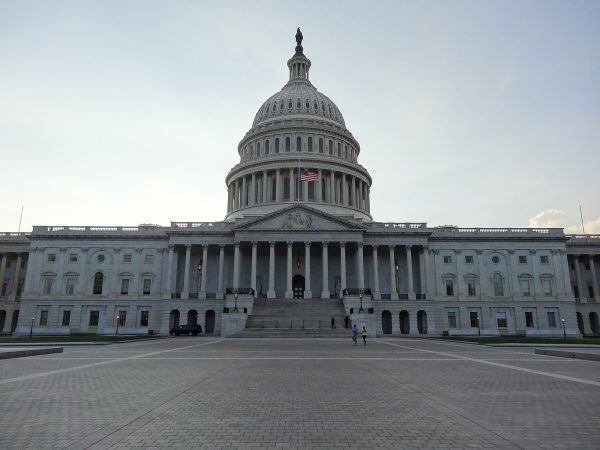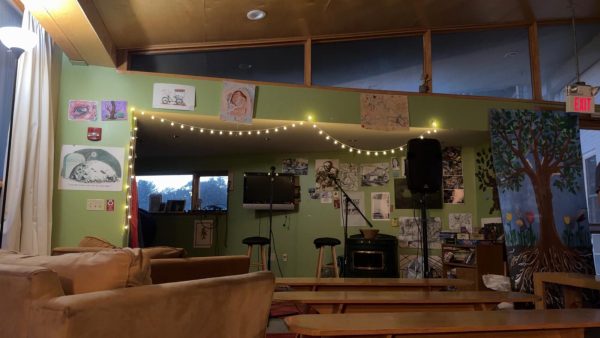College Officials Respond to Demands
College officials announced plans to hire additional counseling staff in the Wellness Center and implement more diversity training for students, faculty and staff starting Fall 2016, according to a statement they issued to activists from the Why We Wear Black movement.
The changes come in response to demands issued by the activists at the end of January, following a month-long period of demonstrations and dialogue events about inclusivity on campus. The activists who prepared the demands sorted them into four categories: training and development; student campus resources; curriculum and classroom experience; and faculty diversity.
Vice president of Student Life Joyce Bylander, Neil Weissman, provost and dean of the college, and Michael Reed, vice president of Institutional Initiatives developed the statement after they met with the WWWB representatives, according to Bylander.
“We took the list of asks very seriously and as a division (The Office of Student Life) we tried to answer each of the points raised,” said Bylander, whose division oversees the Wellness Center. “Weissman, Reed and I got clarification on some points we had questions about and the group pushed our thinking further on some of the areas to which we responded.
All in all, I was pleased with the conversation.”
In their response to the demands, college officials said that the Wellness Center would increase their staff in preparation for the fall 2016 semester.
“In advance of the expected increase in demand for services in fall [2015], the Wellness Center hired an additional part-time counselor and increased the hours of psychiatric services available for students,” administrators said in the statement, which the WWWB movement shared on their Facebook page. They also reported that the fall 2015 semester brought “a 26 percent increase in the number of students seeking services compared to fall 2014,” even though the student body has only increased 2 percent since that time.
They also responded to the request that the Wellness Center hire more staff of color.
“Like many at the college, the Wellness Center has been aggressive in its efforts to diversify the pools of candidates in searches for positions and have been very focused on trying to attract more diverse staff to the college,” the statement said. “There will also be focused outreach programs that are known to produce diverse candidates and associations that represent individuals from targeted groups.”
On the subject of training and development, a main concern voiced by the activists was a perceived lack of diversity training for students and faculty members. The activists wanted to see all members of the Dickinson community engage in dialogues about identity.
Bylander, Weissman and Reed hope to create more opportunities for diversity training in first-year orientation programs.
They also noted that the college already offers diversity training for all employees, which “involves a combination of in-person and web-based modules [to help employees] recognize, address and support a harassment and discrimination-free learning environment and workplace.”
The officials also outlined training programs that they will introduce in fall 2016, such as an Inclusive Leadership training program, Sustained Dialogue training available for faculty and increased education on bias awareness and reporting.
Weissman reported that administrators and faculty have “taken the asks very seriously in the division of Academic Affairs.”
“Our associate provost for curriculum has also met separately with representatives of WWWB to work on some of the asks,” said Weissman. “I have alerted the committees with which I work – the Academic Program & Standards Committee and the Faculty Personnel Committee – that there will be proposals coming forward for their review.”
The organizers of the movement recognize that the administration has been responsive but know that “our work is not yet done here,” said Janel Pineda ’18, a representative of the WWWB movement, on behalf of the organizers.
“We ultimately see the administration’s response to our asks as a stepping stone toward achieving the goals of the movement,” Pineda said.
Pineda reported that the activists would like the college to acknowledge the movement in their official communication channels, such as the Dickinson website.
“We wonder why the movement has not been publicly mentioned on any of Dickinson affiliated sources besides the student-run newspaper, and hope that this will change in the future,” said Pineda on behalf of the WWWB organizers. “As we continue on with the movement, we want to ensure that the student body is also still engaged in working toward creating an inclusive and welcoming campus environment. This campus can expect more demonstrations in the near future––and we expect that the supporters of the movement show up.”




